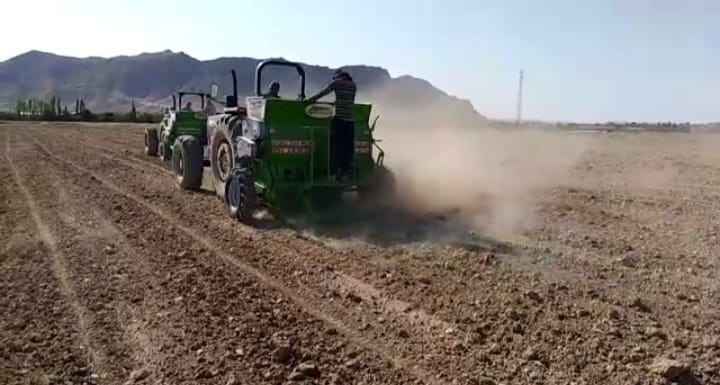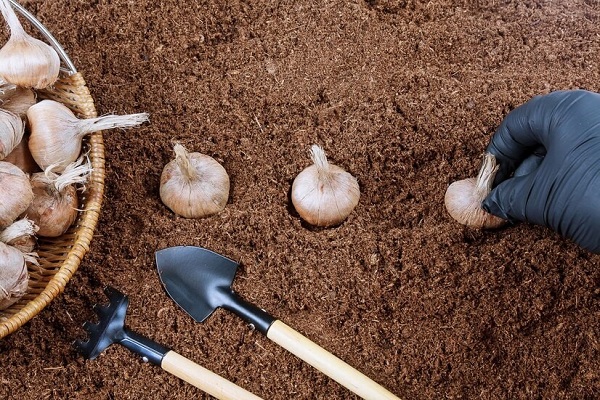* The selected seeds must be healthy and free from pests and diseases (seed disinfection).
* Seed size – the weight of the selected corms should be more than 8 grams (cultivating larger corms).
* Do not use damaged or broken corms for cultivation.
* Separate the soil from the corms (commonly referred to as “silvering”).
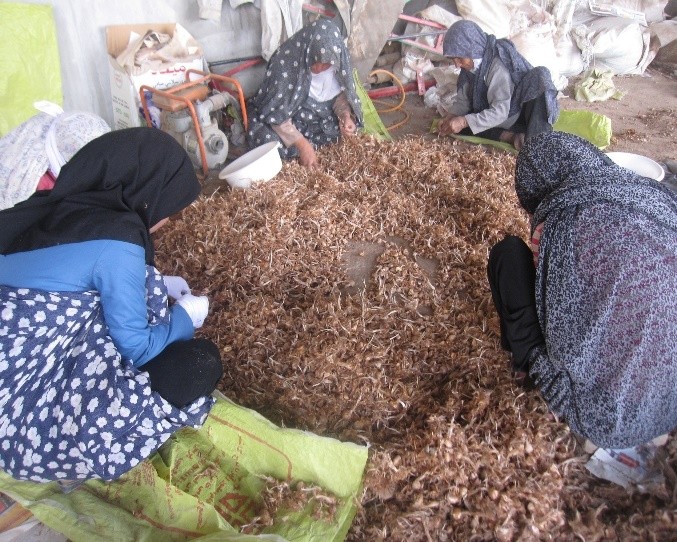
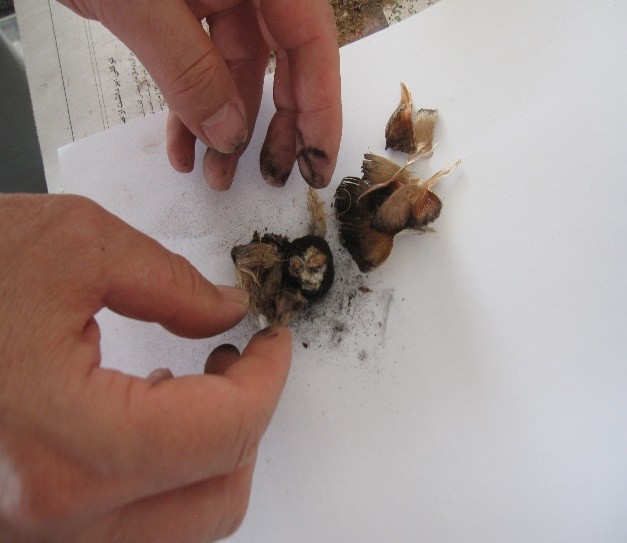
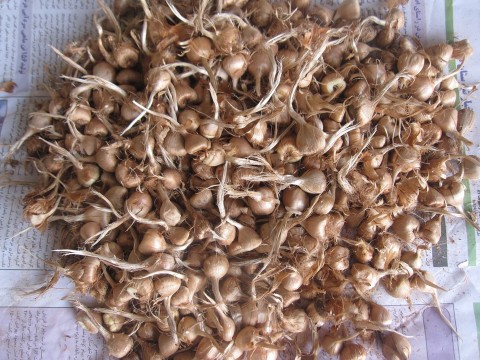

Selection of saffron corms:
* Should weigh 8 to 10 grams.
* From young fields aged 4 to 5 years.
* Dried properly.
* Free from spots and diseases.
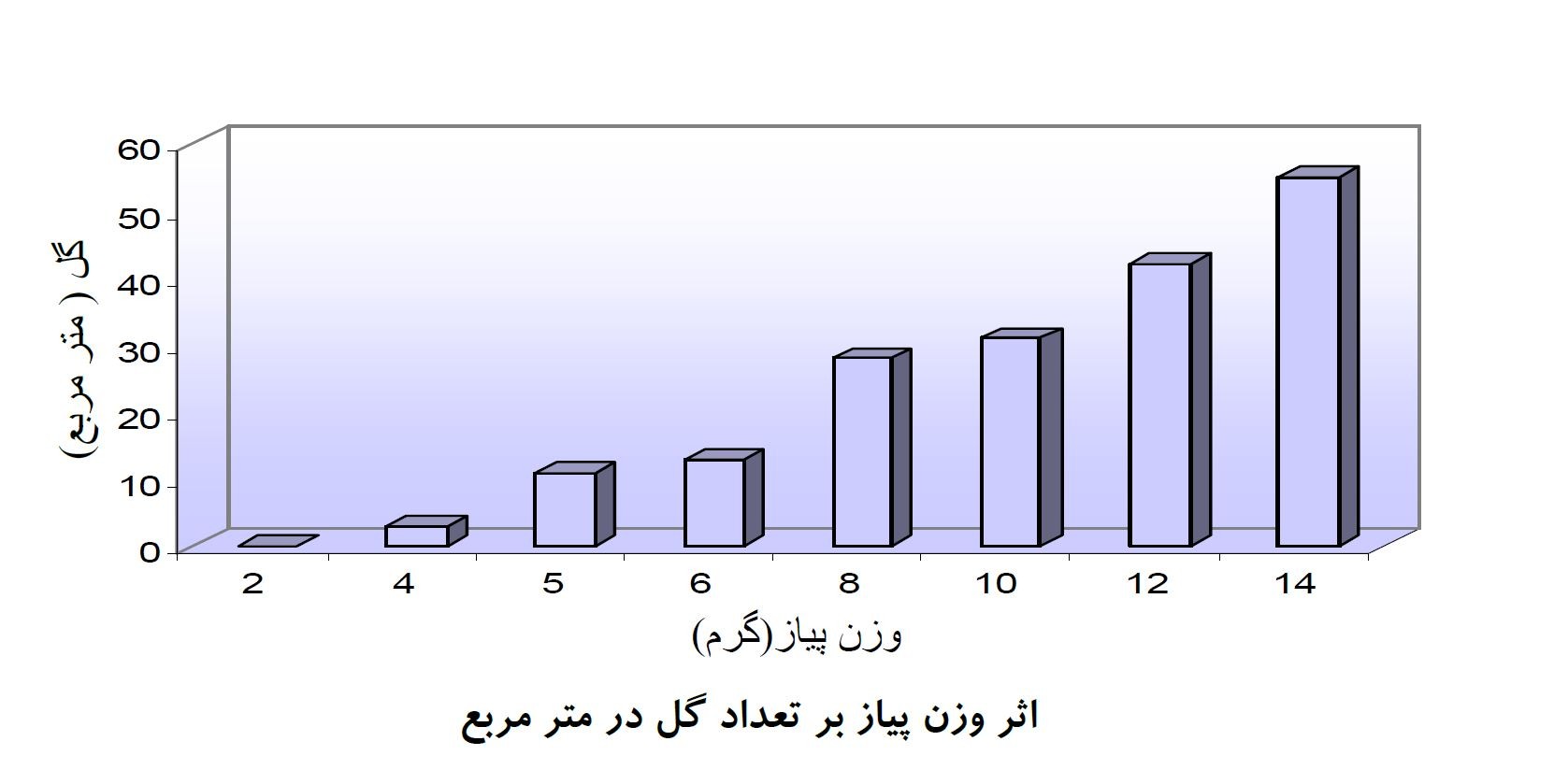
Suitable time for planting:
The best time to plant corms is during the true dormancy period, which is from mid-May to early July.
Technical note:
Although the best time for saffron cultivation is during the true dormancy period of the corms (late May to early July), due to climatic conditions, it is advisable to plant in September (the apparent dormancy period) in hot regions to prevent the corms from pest infestations and fungal rot.
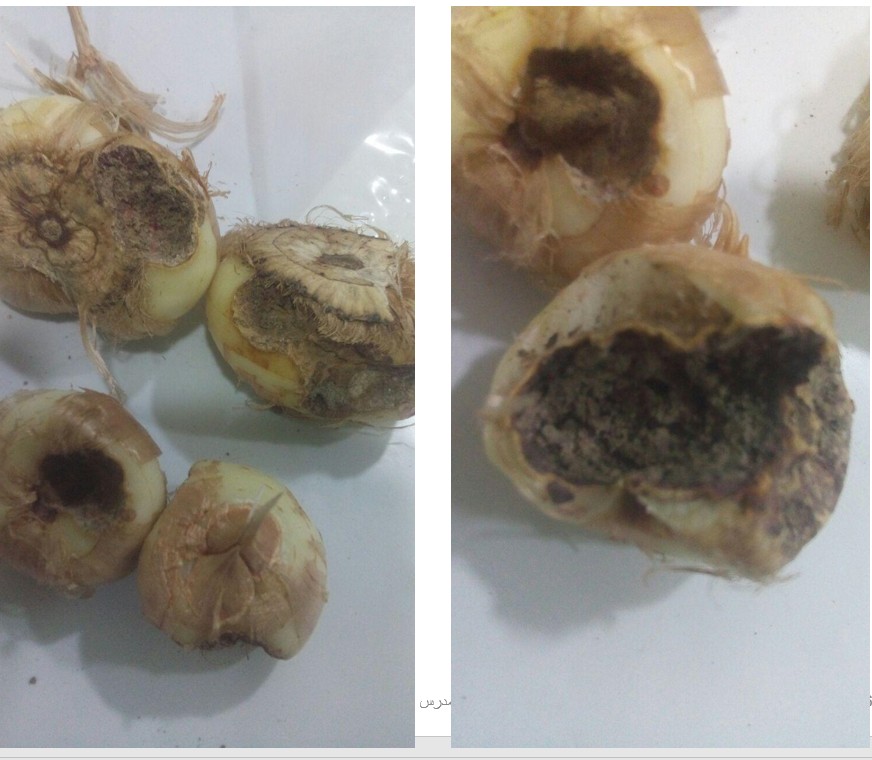
Suitable planting depth:
* The goal is to produce a higher yield; therefore, a depth of 20 to 25 centimeters is generally recommended. In cold regions, to prevent the risk of frost and freezing of saffron corms, it is better to consider a planting depth of about 25 centimeters (in other regions, a planting depth of 15 to 20 centimeters is recommended).
* A depth greater than 30 centimeters prevents the corms from multiplying, as most of the plant’s energy is used for the protective sheath and for reaching the soil surface (resulting in poor quality, reduced yield, and wasted energy).
* A depth of less than 20 centimeters leads to the development of contractile roots (daughter corms) and a large number of small corms (which results in wasted energy and reduced plant growth).
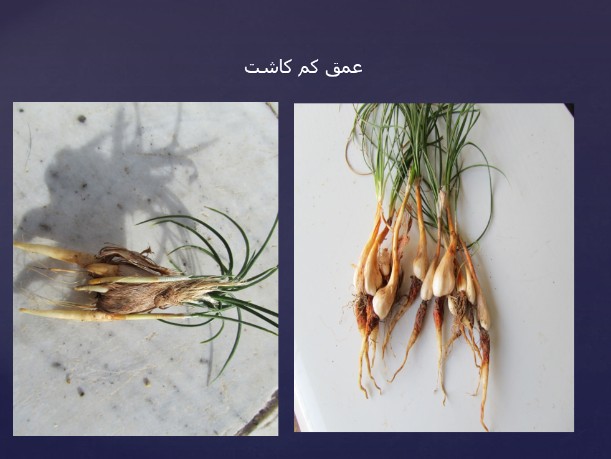
Planting density (corm consumption per hectare):
* To achieve optimal yield, the appropriate amount of corms per unit area (100 to 120 corms per square meter) is an effective factor. Based on research approaches, the consumption of 10 to 12 tons of corms (with an average weight of approximately 8 to 10 grams) per hectare increases flower yield in the early years of saffron fields.
Planting:
Soil preparation:
– Plowing and leveling the land and removing clods.
– Eliminating weeds in the field.
– Adding organic and other fertilizers.
– Paying attention to the recommendations from the soil analysis laboratory.
To achieve optimal results, it is better to prepare the planting bed by plowing the soil and adding organic fertilizers (preferably processed cow manure) in early autumn. In the following spring, after the spring rains, light plowing and leveling should be done in cold regions before planting. In warmer areas, as mentioned earlier, it is advisable to postpone planting until September to prevent corms from pest infestations and fungal rot.
The flower yield has a direct relationship with soil variables, especially organic matter. Since the main deficiency in the soils of saffron-growing regions in Iran is low organic matter (less than 0.5%), to achieve optimal yields, the organic matter in saffron fields should not be less than 1.5%.
Therefore, it is recommended that, based on the soil analysis, for every 1% increase in organic matter, 45 tons of processed cow manure should be added to the soil before planting.

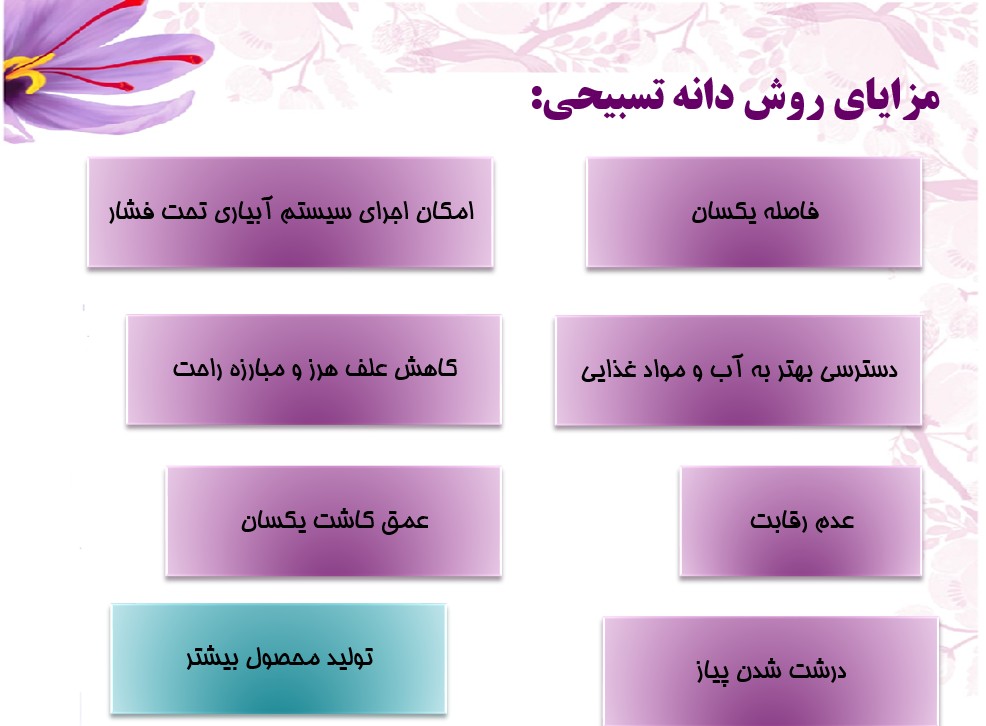
Plant density in the bead-seeding method:
Based on research approaches and valuable experiences of leading farmers, it is recommended to plant approximately 100 to 120 corms per square meter in a sole cropping method, resembling beads, with a spacing of 3 to 5 centimeters and a row spacing of 20 to 25 centimeters, and a planting depth of 20 to 25 centimeters.
